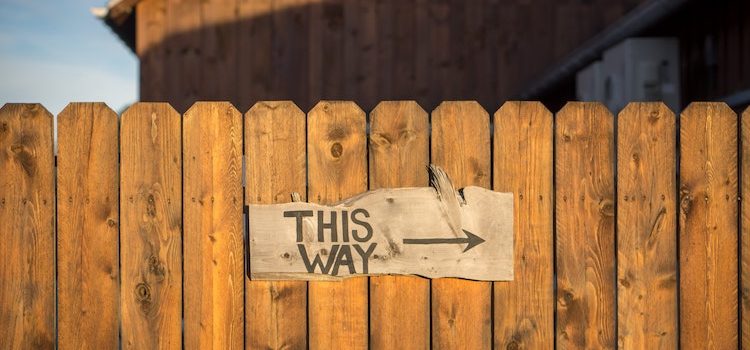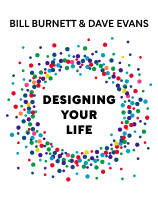

This article is an excerpt from the Shortform book guide to "Designing Your Life" by Bill Burnett and Dave Evans. Shortform has the world's best summaries and analyses of books you should be reading.
Like this article? Sign up for a free trial here .
What is wayfinding? How can it help you find direction in life?
Wayfinding is an ancient art that prompts you to follow clues. To find direction in life, the clues are involvement, energy, and joy. A Wayfinding Journal can help you plan your daily life by keeping an activity log and reflecting on what you learn from it.
Keep reading to learn how to use wayfinding to get direction in life.
Finding Direction in Life
You can use the ancient art of wayfinding to discern your direction in life by keeping a journal to follow the clues of your involvement, energy, and joy.
Defective belief: Work shouldn’t be enjoyable
- Corrected belief: Enjoyment will guide you to the right work for you.
Wayfinding Your Life
Wayfinding helps you know where you’re going without a firm destination in mind. All you need is a compass and a direction. It requires you to pay attention to clues. For wayfinding in your life, the clues are involvement, energy, and joy. These clues provide direction in life.
Involvement
Notice how involved and engaged you feel with your work. What makes you feel interested, focused, and excited? On the other end, what makes you feel bored and dull?
Pay attention to the intensified state of involvement known as flow. Being “in flow” means total involvement in an activity, combined with a sense of euphoria, clarity, peace, and the disappearance of time. It can happen with almost any activity—playing a sport, chopping an onion, designing a business plan. Flow relates to the “play” gauge on your life dashboard, because flow makes you enjoy the pure doing of something.
Energy
Start paying attention to your energy level. How vital and alive do you feel? Also notice the activities you’re involved in whenever you feel highly energized, as well as the ones that make you feel exhausted. Follow these clues to get direction in life.
Joy
Joy is a feeling of aliveness, engagement, and delight when an activity seems intrinsically fun. Pay attention to the activities that bring you joy—and also the ones that steal it.
Your Wayfinding Journal
To find direction in life by making use of these clues of involvement, energy, and joy, keep a journal consisting of two components:
- An activity log to record times when you feel involved and energized (or bored and drained)
- Reflections that describe what you’re learning from the activity log
Activity Log
Your activity log is where you keep a list of your main daily activities and indicate how involved and energized they made you feel. The point is to figure out which things motivate you and which ones demotivate you. Write in this journal frequently—at least twice a week, but ideally every day.
When you get the hang of paying detailed attention to your daily activities, you’ll have learned to “catch” yourself having a good time, and the knowledge of what produces this effect will be invaluable in discerning direction in life.
Reflections
The reflections section of your Wayfinding Journal is where you write down what you learn from examining your activity log and noticing any themes, insights, or surprises about what does and doesn’t make you feel involved and energized. Before starting to do your reflections, build up a substantial activity log—at least three weeks’ worth. That way you’ll have enough material to identify real patterns. Then start writing weekly reflections on blank pages of your activity log.
Be specific in these reflections. “Zoom in” mentally and identify the exact components of your activities that involve or bore you, energize or drain you. Did you really enjoy the whole staff meeting, or was it just the part where you restated someone’s point better? If it was just that part, did your enjoyment come from restating the point artfully or from the fact that you helped to facilitate group consensus? The answers to such questions give you actionable data for finding direction in life.
To help with your reflections, use the following questions:
- Who: Who were you with? How did they affect your experience, either positively or negatively?
- What: What were you doing? Was the activity structured or unstructured? Did you have a specific role or just a general presence?
- Where: Where were you? How did that environment make you feel?
- Interactions: What were you interacting with—people, things, machines? Was the interaction formal or informal? If it was objects or devices, what were they? How did they make you feel?
Mining Your Memories
You can create a Wayfinding Journal from your past experiences as well as your present ones. Just apply your new journaling technique to memories of past work experiences where you entered flow, reached peak energy, and experienced joy. Using these peak memories can be especially helpful when your current situation doesn’t offer much material for your journal, or when you’re just starting your professional life and don’t have much experience to draw on. You can use school projects, volunteer work, and so on.
Using Your Wayfinding Journal
You can use your Wayfinding Journal to strategically plan your daily life. For example, in reflecting on his activity log, one of this book’s authors found that he experienced flow from his office hours and his drawing lessons, and that he felt energized from going on date nights with his wife and teaching classes. For activities such as faculty meetings, his involvement and energy depended on the topic at hand. He was surprised to find that one activity he thought he liked actually drained him. So he redesigned that activity to work better, and he rebuilt his schedule to maximize his energizing activities and carefully manage his draining activities.

———End of Preview———
Like what you just read? Read the rest of the world's best book summary and analysis of Bill Burnett and Dave Evans's "Designing Your Life" at Shortform .
Here's what you'll find in our full Designing Your Life summary :
- Why finding your "true passion" in life is a myth
- The five mental attitudes in design thinking
- How to design a meaningful life in which you can truly thrive






